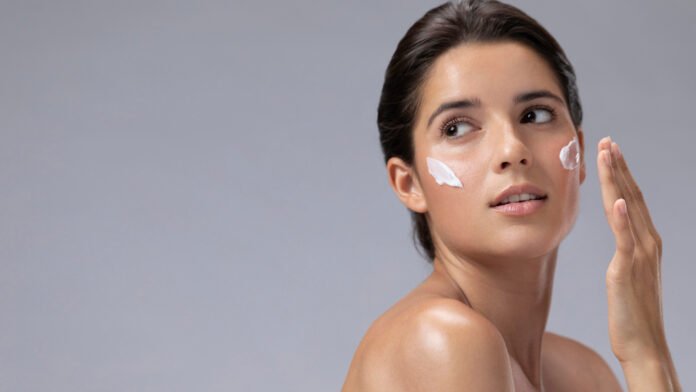Tip #1: Reduce stress
As the largest organ in the body with an area of 2m2 in a full-grown human being, it is not at all easy to tease the optimum out of every square millimeter. Therefore, our first tip is: Don’t be too hard on yourself! Everyone has to struggle with impurities from time to time and in manageable amounts they are part of a normal body cycle. They indicate, for example, hormonal changes or cleaning processes and should therefore be accepted without much resistance. Stronger (medical) measures are only necessary if the skin problems take on an oversized dimension and restrict life.
Because there is one thing you don’t need for beautiful skin – and that is stress. This applies not only to skin care itself but to life as a whole. The chronic activation of the sympathetic nervous system means that vital regenerative processes such as digestion, hormone regulation, and the formation and breakdown of skin cells are only carried out on the back burner.
The longer you are in stress mode, the more your skin suffers because the body cannot devote sufficient resources to its regeneration.
Tip #2: Exercise
Movement is fundamental not only for a beautiful body but also for beautiful skin. Because only movement activates the lymphatic system, which is responsible for the disposal of cell degradation products and various pollutants. When there is a lack of exercise, the body is unable to adequately rid of all of this waste and must find other ways to accommodate it. In addition to fatty tissue, the skin is unfortunately also a very popular storage target and there is an increased accumulation of bacteria, which, together with environmental influences and the skin’s sebum, cause pimples and blackheads.
Movement, on the other hand, stimulates the entire circulatory system. The blood transports fresh vital substances to the last cell corners of the skin, the lymph fluid is transported to the lymph nodes, from where it is filtered and renewed, and the lungs are also cleaned with deep, powerful breaths. All in all, exercise is a real cure for your skin!
Moderate forms of movement that do not overstrain the muscles are ideal. Excessively intense exercise can even have the opposite effect if it is not compensated for by intelligent stretching or quality relaxation.
Tip #3: Sufficient good liquid

First of all, the liquid is necessary so that both the blood and the lymph do not become too thick and can transport sufficient nutrients into the cells. Furthermore, water is the fuel of every cell. Once a cell dries up, it dies, leaving behind dead tissue. A similar process takes place in dry, scaly skin, among other things.
The quality of the liquid is particularly important. If possible, limit yourself to pure, non-carbonated water, unsweetened teas, and foods containing water such as fruits and vegetables. Beverages such as coffee, soft drinks, or spirits, on the other hand, even deprive your body of water because they have to be filtered and excreted as quickly as possible. With a few exceptions, fruit juices, and milk are also good sources of liquid because they also supply electrolytes.
It is also important that you do not consume too much pure water. As a result, you run the risk of flushing too many electrolytes (salts) out of your body and even more dehydration. Electrolytes are essential to transport water into the cells. If you find yourself very thirsty but drinking water isn’t helping, try adding some salt to help restore balance. You will notice “how the water arrives in the body”.
Fancy something new? Stir some barley grass powder into your water.
Tip #4: The right diet
A healthy diet for the skin is always a healthy diet for the whole body. Because it includes a wealth of important vital substances and reduces harmful substances that burden the body and overstrain the detoxification function.
In general, this means: focusing on fresh, wholesome food made from healthy fat (especially omega-3 fatty acids), high-quality proteins, and a colorful variety of fruits and vegetables. Especially high-quality fatty acids are essential for the natural elasticity of the skin and should be consumed daily. They also regulate the hormone cycle and thus reduce the risk of hormone-related skin impurities.
On the other hand, the following foods should be avoided:
- Unhealthy Fatty Acids: Hydrogenated fats, trans fats, cheap vegetable oils
- Sugary foods: sweets, soft drinks, cakes
- Industrial baked goods with cheap wheat, hydrogenated fats, and lots of preservatives
- Crackers, chips, and salty snacks dehydrate the body and contain unhealthy fat
- Fast food and fried food
The good thing is that if you eat a balanced diet with lots of fresh food, not only your skin become more beautiful, but also your whole life, because you will have much more energy.
Tip #5: Avoid pollutants
The pollutants with the greatest impact on our skin are certainly alcohol, tobacco, and exhaust fumes. While alcohol and tobacco not only pollute our cells but also affect our organs, exhaust fumes mainly cause damage to the skin.
Alcohol, in connection with healthy skin, benefits from special attention because it actively attacks the liver. The liver, in turn, is the most important detoxification organ and a malfunction correlates with skin diseases more often than average. The skin diseases acne, rosacea, folliculitis, or seborrheic eczema are known as so-called “liver dermatoses”.
So do your body and skin a favor and reduce harmful stimulants as much as possible and treat yourself to lots of fresh air.
Tip #6: The right amount of sun
The sun is the engine of life on our planet. Whenever the sun shines, the plants bloom, and nature comes to life. The same applies to the human body. It is not for nothing that we value sun-tanned skin as a beauty ideal.
By absorbing the sun’s rays, our body produces vitamin D, which has an invigorating effect on hormone production. The libido and the positive attitude to life increase and this in turn is reflected in radiant skin.
However, be careful! Too much sunlight burns the skin and immediately causes noticeable damage in the form of sunburn; Of course, this is anything but conducive to healthy skin. Therefore, ensure you have a balanced dosage and retreat to the shade if necessary.
Tip #7: Restful sleep
Relaxation is necessary for the body to regenerate. The parasympathetic nervous system kicks in, allowing muscles, skin, hair, and all other structures to realign. It is not for nothing that the term “beauty sleep” has become popular. Lack of sleep makes your skin look sallow and reduces blood flow. And on top of that, you are more prone to stress.
Incidentally, restful sleep is defined not only by a sufficient period of 7-8 hours but also by good preparation. Avoid electronics, heavy food, and stimulants before bed and you will find that after a few days you will sleep much more restfully and your skin will become stronger.
If you want to sleep better, you will find good tips here.
Tip #8: Eat antioxidants

The molecules responsible for aging and degeneration on a biological level are called free radicals. They are caused by stress and environmental toxins such as exhaust fumes, drugs, or unhealthy food. Antioxidants, on the other hand, are responsible for thwarting and eliminating free radicals in the body. Therefore, one of the most important tips for healthy skin is: Eat lots of antioxidants!
There are many different forms of antioxidants, the most well-known being the vitamins. Vitamin A, vitamin C, and vitamin E have proven to be essential for healthy skin.
While vitamin A is found in pure form in eggs and fish, it is found in plant form as beta-carotene in carrots and sweet potatoes. Vitamin C, meanwhile, can be found in peppers, citrus fruits, and berries, while vitamin E is found in high amounts in almonds or peanuts.
Other antioxidants are phytochemicals such as chlorophyll (the green pigment in leafy vegetables) or minerals such as zinc, iron, or selenium.
Tip #9: Massages
Healthy tissue can only develop if it gets enough oxygen and vital substances. In turn, it must be supplied with blood unhindered. If movement and breathing are no longer sufficient to increase blood flow, for example, because of tension, massages can be a real boon not only for the skin but for your overall health.
Because of the local stimulation of the tissue, the blood flow is enriched and the cells are flooded with nutrients. Both full-body massages and targeted facial and head massages can help improve the complexion.
Tip #10: Exfoliate
Peeling has a similar effect to a massage. The blood flow is stimulated and new cells are increasingly produced. In addition, you enjoy another benefit, namely the removal of all dead skin cells. The skin appears wonderfully radiant after each peeling and is optimally prepared for the nutrient supply of the blood and subsequent care.
Tip #11: Use the right skincare routine
Of course, external care is also important. However, to exploit its full potential, it should consist of 100% high-quality ingredients if possible. Silicones, emulsifiers, microplastics, paraffin, or alcohols, therefore, have no place and should be replaced by natural oils, as well as vitamins and minerals. These not only ensure that the complexion appears more radiant immediately after application, but also that the biological processes are supported.
Therefore, use natural cosmetics for your skincare! Products with aloe vera or almond oil (vitamin E) are particularly effective.
Tip #12: Avoid over-grooming
“Less is more”. This saying could not be more apt when it comes to healthy skin. After all, the skin is a bioactive organ and is governed by nature’s inimitable intelligence. So she knows what to do!
The more you interfere with her natural processes, the harder it will be for her to adjust. Not only the amount of care products should be fine-tuned, but also the amount of active ingredients that you apply to the skin. A cream with 20 active ingredients paired with a mask and peeling that contains 10 active ingredients or more is simply too much. Limit yourself to 1-3 natural substances and you will notice how your skin becomes much calmer.


